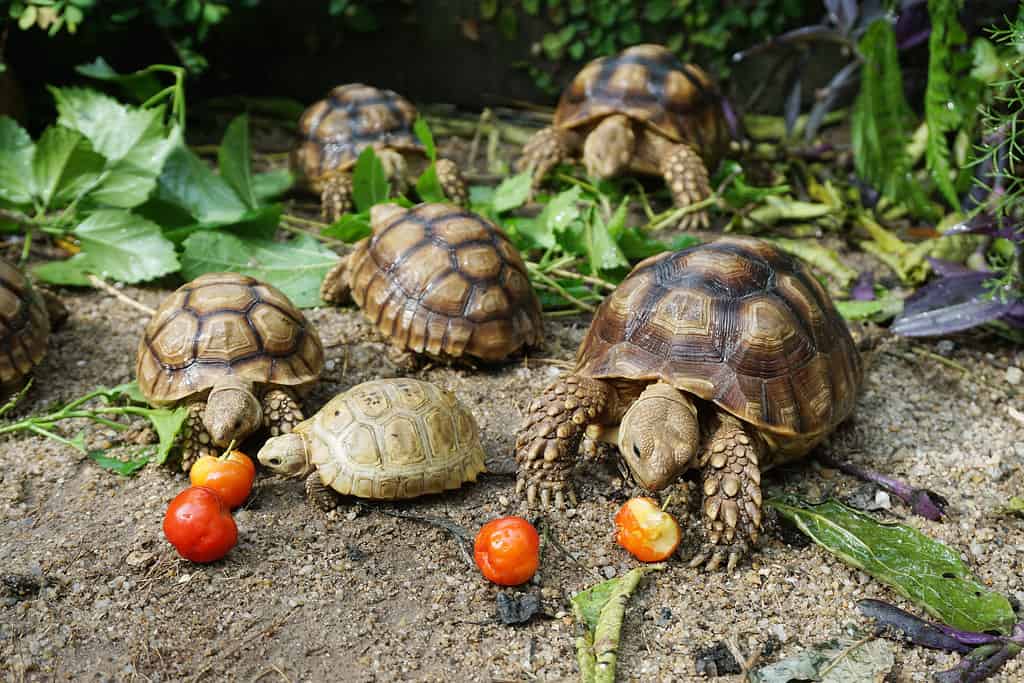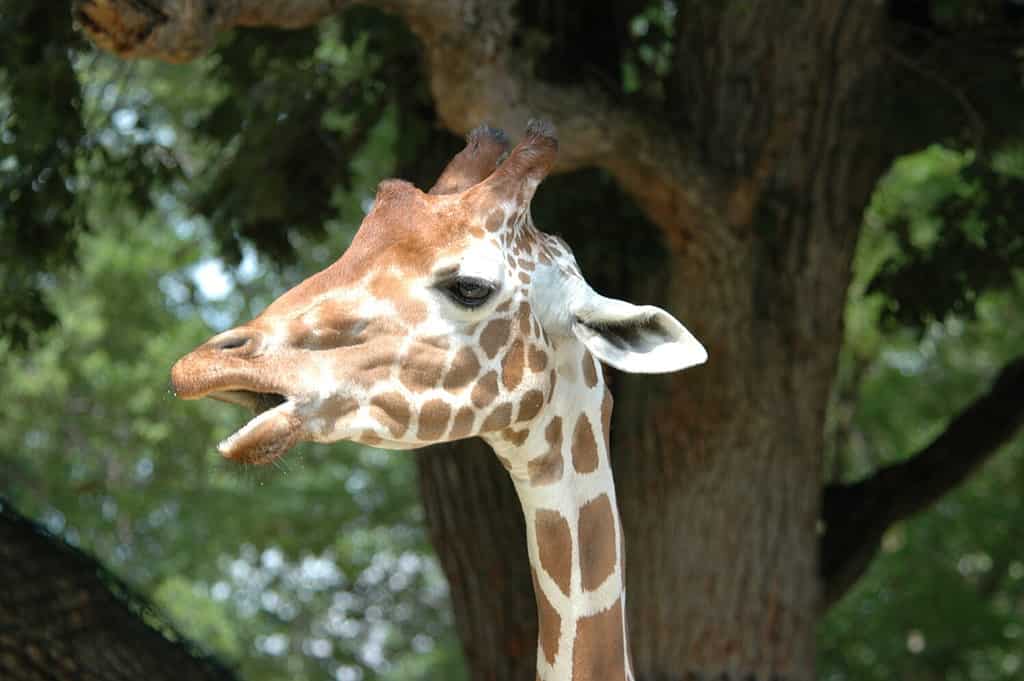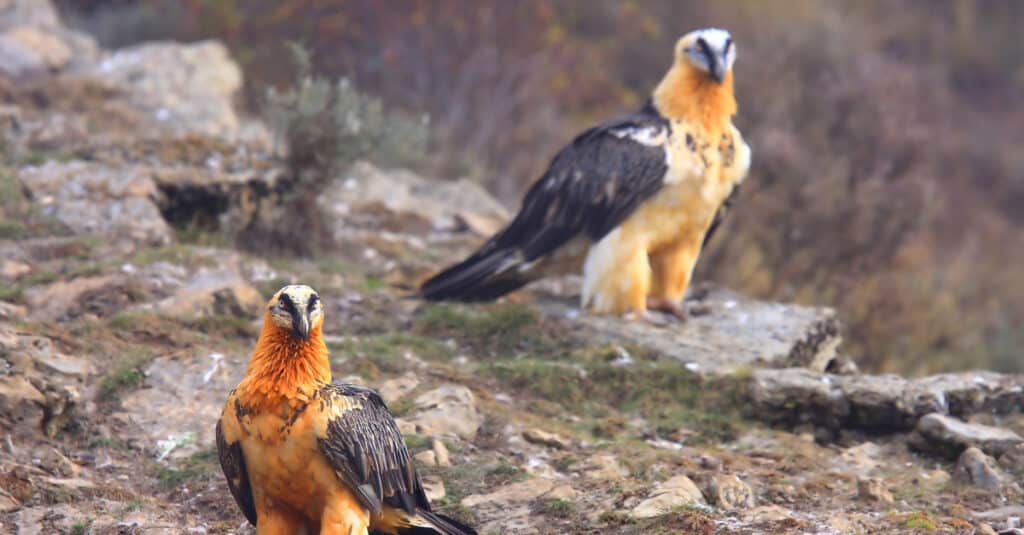We know that dogs love bones, but they aren’t supposed to eat whole bones. In fact, they can’t eat cooked bones due to the excessive grease and seasonings from the foods that the bones come from. However, bones are much like living tissues. They’re rich in micronutrients like calcium, sodium, phosphorus, magnesium, and calcium. Those nutrients are also in the bone-cooked meats. That can be one of the reasons why bone-eating animals love it. Other reasons include that there are high concentrations of collagen, gelatin, and glycine that support gut health.
There’s a term for bone eaters and their practice. It is osteophagy. It’s a phrase that is defined as a way for herbivores to get sufficient amounts of phosphate while eating bones. Phosphorus is a needed mineral for animals. Phosphorus plays a vital role in the skeletal system and many biological processes in the body. So for animals to eat bones help them prevent deficiencies in their body. Keep reading to learn more about some bone-eating animals and how they are able to eat bones.
1. Wolverienes

A high-resolution image of a
wolverine
in the snow.
©jamenpercy/iStock via Getty Images
Wolverines are more famous for being carnivores than herbivores. They’re a part of the Mustelidae family that lives in dense forests and mountain areas. Although they have a ferocious reputation, they have an average bite force compared to the other animals their size. There is a study that shows that weasels, Tasmanian Devils, and palm civets have stronger bite forces rather than wolverines.
What helps wolverines eat bones is their jaws and strong neck muscles. Their neck muscles and jaws help break down bones easily and make it much easier to digest. A special feature they have is that their molars are 90 degrees inward which helps them crack the bones. Wolverines can go without food for long periods of time as their diet is based on seasonal changes and food availability. Wolverines eat small to medium-sized animals such as birds, snowshoe hares, and voles. They’re also known to kill and eat caribou, deer, and Dall sheep.
2. Tortosises

African Sulcata
Tortoise
Natural Habitat, Close up African spurred tortoise resting in the garden, Slow life, Africa spurred tortoise to sunbathe on ground with his protective shell, Beautiful Tortoise.
©Somedaygood/iStock via Getty Images
Tortoises are known herbivores as they lack grinding teeth, but they’re not only able to eat bones, but they also can eat stones and calcium-dense soil. Scientific American covered possible reasons on how the turtles are able to eat bones. These reptiles have strong beaks and even stronger jaws to break those bones. For several years, some turtles were x-rayed and scientists found stones and bone fragments inside their digestive systems. They spend most of their days foraging for food but when they find food, their diet doesn’t really change.
Regardless of the environment, tortoises from all over and other turtle types are able to eat bones by how they break them down easily with their beak and jaw strength.
3. Giraffes

Cooperative Reticulated Giraffe (Giraffa camelopardalis reticulata) at Omaha Henry Doorly Zoo (one of a series).
©Bull's-Eye Visual Arts/Shutterstock.com
Giraffes are famous herbivores that are also massive eaters, literally and figuratively. Giraffes can eat up to 66 pounds of food a day but can survive off less than 33 lbs of food. Their diet mostly consists of plants from tall trees. Their long necks allow them to reach vegetation that’s too high for most animals. Despite their length, they have the same amount of bones as most hooved animals.
So how do giraffes eat bones? Well, they don’t swallow the bones directly like other bone eaters such as tortoises. Instead, they chew through bones and suck on them to slowly break them down. Its saliva helps slowly wear the bones down into digestible pieces and drop what they can’t break down on the ground. Giraffes need to get their calcium and phosphorus through the bones as they have a fast growth rate. These bone-eating animals also have a large bone mass to body mass ratio where they have much more bone mass than muscle mass.
4. Cattle

Big brown cows from Scotland
©Parasoliastock/iStock via Getty Images
Cattle are known herbivores that serve different purposes. Some of the purposes cattle serve are for breeding along with livestock and milk purposes. Cattle could also pull plows and carts. A couple of types of cattle include Senepol Cattle, cows, oxen, brangus, Japanese brown cattle, zebu, Brown Swiss, and Holstein.
The diets most cattle have are hay, grass, clovers, legumes, and alfalfa. They also enjoy fruit. So, how do cattle eat bones? Cattle have been known to chew on bones to help with vitamin deficiencies. They eat through grazing as cattle use their tongues and hard dental pads to tear material apart. Their food goes through four stomachs. They first chew just enough food to swallow it. The unchewed food travels to the first two stomachs, the rectum and rumen. They stay in those areas until later. Then the cow coughs up bits and pieces of the unchewed food to eat it again and then those pieces travel into the third and fourth stomachs to be fully digested. They spend about 6.5 hours of their day eating and drinking food.
5. Birds

A bearded vulture can live up to 40 years and sometimes beyond.
©ESCOCIA/Shutterstock.com
Some birds can be friendly creatures, others aren’t so friendly. Predators like owls, hawks, and vultures are known as carnivores, but most birds are herbivores. Although there are many carnivorous birds, there are only a few birds that really eat bones. The most notable bone-eating animal in the bird family is the bearded vulture. Bearded vultures are the only members of the Gypaetus species. They are also one of the largest vultures in the world when it comes to body size and wing span. It is a specialized bone-eater as 70%-90% of their diet consists of bones.
So how do they eat bones? They use their beaks to crush the smaller bones. That’s a simple function for them, but they can’t do that with the larger bones. For the larger bones, they grab them and toss them off cliffs or toss them onto rocks so they can break the bones and consume the marrow. The bearded vultures are native to Europe, Asia, and Africa. They live in mostly mountain and cliff areas along with open ranges. Their biggest threats are humans and they were once almost entirely eradicated in Europe as they were once recognized as a threat.
6. Bears

Most black bears have a thick, black coat, but it can look dark brown, grayish-blue, blond, or cinnamon.
©Mark Caunt/Shutterstock.com
Bears of all kinds are omnivores as they eat both plants and animals. They’re one of the most vast bone-eating animals in North America. Aside from berries, grains, and fruits, bears eat mammals. They can eat fish, deer, and moose. A bear by itself can take down giant moose. For large prey, they get on their hind legs to claw and bite at the prey’s necks, back, and shoulders. They’re strong enough to snap their necks.
Bears are able to eat bones with strong force. Their jaws can extend to great lengths and can cut through many things with their sharp molars. When bears eat fish, they swallow the bones whole without coughing it up. It is possible that small pieces of the fishbone can end up in their fecal matter. For larger bones, they don’t eat them in its entirety. They chew on them partially as a way to get whatever minerals they can from them and discard them. Aside from fruits, grains, and mammals, bears can also eat parts of tree stumps and even attack anthills by licking them to consume the ants.
7. Humans (In Some Religious Practices)
This isn’t a dark, horror film-like inclusion to this list of bone-eating animals, but humans are technically animals. The Yanomami tribe in South America has a practice somewhat similar to cannibalism called endocannibalism. A part of their burial ritual process includes breaking down the bones of the deceased person by burning the body and turning it into a powder. They mix the powder with banana to turn it into a banana soup, which is a local delicacy. The Yanomami tribe believes that by doing so, the souls can attain eternal peace.
The photo featured at the top of this post is © Markus Oblaender/Shutterstock.com
Thank you for reading! Have some feedback for us? Contact the AZ Animals editorial team.






